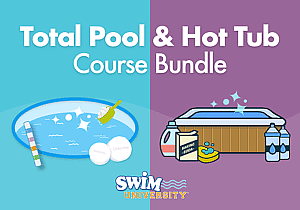- Test the water regularly to ensure the pH and chlorine levels are balanced.
Testing the water regularly is an important aspect of pool maintenance to ensure the pH and chlorine levels are balanced.
To test the pH level, you can use a pool test kit or test strips. The ideal pH level for a pool should be between 7.2 and 7.8.
If the pH level is too low, you can add a pH increaser such as sodium carbonate (soda ash) to raise it. If the pH level is too high, you can add a pH decreaser such as muriatic acid or sodium bisulfate to lower it.
To test the chlorine level, you can use a pool test kit or test strips. The ideal chlorine level for a pool should be between 1 and 3 parts per million (ppm). If the chlorine level is too low, you can add chlorine to the pool to raise it. If the chlorine level is too high, you can wait for the chlorine
level to decrease naturally, or add a chlorine neutralizer such as sodium thiosulfate. It’s also a good idea to test the total alkalinity and the Calcium Hardness of your pool as well. Follow the manufacturer’s instructions for the test kit or test strips you are using and consult a professional if you are unsure about any aspect of pool water testing.
Total Pool & Hot Tub Course Bundle!

Get all four of the pool and hot tub courses including The Pool Care Video Course, The Hot Tub Video Course, Money-Saving Guide for Pool Owners, and the Pool Winterization Course for one low price!
- Skim the surface of the pool to remove debris and leaves.
Skimming the surface of the pool is an important aspect of pool maintenance to remove debris and leaves that may have fallen into the pool. This helps to keep the water clean and clear, and also helps to prevent the growth of harmful bacteria and algae.
There are several ways to skim the surface of a pool:
- Manual skimming: Use a long-handled pool skimmer net to scoop leaves and debris from the surface of the pool. This method requires a bit of effort, but it’s a good way to remove debris that has accumulated near the surface of the pool.
- Automatic skimmers: Most pools have a built-in skimmer that automatically removes debris from the surface of the pool. The skimmer is typically located at the side of the pool near the water’s surface.
- Robotic pool cleaner: A robotic pool cleaner can skim the surface of the pool, as well as clean the bottom and walls of the pool. It is an effective and efficient way to keep the pool clean and clear.
It’s important to check the skimmer basket and the pump strainer basket regularly and clean them as needed.
Note that depending on the foliage of your area, leaves, and debris may accumulate more frequently, it is recommended to skim the surface of the pool at least once a day, especially during fall when leaves fall more frequently.










